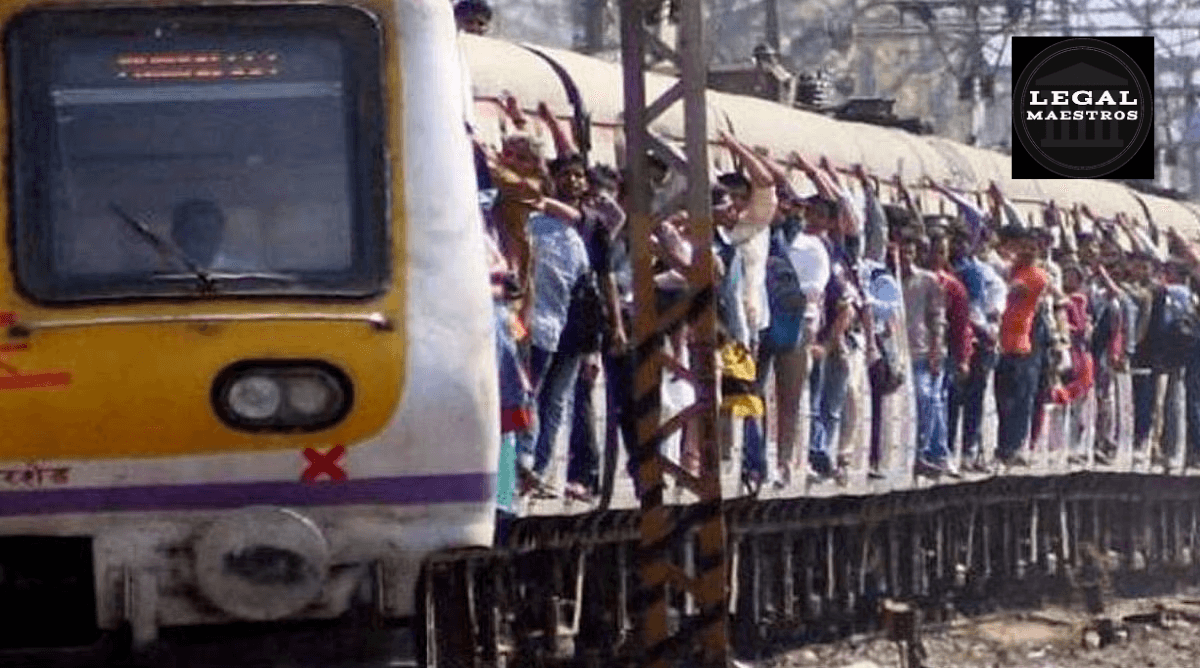
Mumbai Locals to Get Safer? Bombay High Court Proposes Automatic Doors for Commuter Trains
That all radically changed with one new, immensely significant, potentially game-changing…
Mumbai’s real secret sauce, though too often underplayed and underappreciated, is its suburban local train network, which before the pandemic was already carrying a few million passengers per day, and it provides the mega-metro’s secret superpower-charged horsepower that super-accelerates the city’s entire transport ecosystem.
For years, one of our most crucial, life-saving, and cost-effective modes of transportation has been plagued by a series of collisions, nearly all fatal, caused by traffic and passengers rushing out of the rear exit.
The Bombay High Court mandated an end to this practice, retrofitting automatic doors onto all suburban commuter trains in a long overdue move to eliminate this toxic and deadly blight. Such a requirement truly is a new standard—a paradigm shift—in public transport safety, one whose ideal forces a big, complicated, and daunting rail network such as New York City’s to function to a paradigm much more deeply rooted than we’ve discussed here previously.
For any queries or to publish an article or post or advertisement on our platform, do call at +91 6377460764 or email us at contact@legalmaestros.com.
The Deadly Commute: A Daily, Life-or-Death Lottery
For decades, these carnivalesque images of Mumbaikars riding dangerously outside train doors—as they’re assumed to finish their commutes, perched upon them—have acted as shorthand caricatures of the frenetic, do-moves-it work! It can’t be stopped mentality that’s come so far in defining the character of the city.
Beneath this facade of flexibility lies a significant security gap, which is appealing due to the presence of high-quality infrastructure. Travelers, weaponized by the toxic pecuniosity of the peak period and inspired by the abysmal, unnatural expanses of meretricious infrastructure, were forced to fall beneath tracks, onto support pillars, or face terrible cheesification.
For More Updates & Regular Notes Join Our Whats App Group (https://chat.whatsapp.com/DkucckgAEJbCtXwXr2yIt0) and Telegram Group ( https://t.me/legalmaestroeducators )
For any queries or to publish an article or post or advertisement on our platform, do call at +91 6377460764 or email us at contact@legalmaestros.com.
The human toll in lost lives and life-changing injuries from these crashes is a daily reminder of the tragic, preventable, disgusting, grossly negligent reality that millions of Americans face every single day on their favorite mode of transportation. Despite the implementation of various other effective administrative actions, the design failure of open-door coaches—where millions of eager young riders have accessed the platform—has resulted in numerous tragic fatalities over the years.
The High Court’s Unusual But Welcome Activist Stance
A division bench of the Bombay High Court, in a first-of-its-kind order this week, directed retrofitting of automatic door-closing devices on each and every train of the Mumbai locals, as a precautionary city-wide measure, on the whole network. The recognition of human life implies that it should never be in danger without a valid reason.
It’s a pretty radical departure to say that there should be required new, innovative safety standards, not just the old, stale standard. This proposal woefully far exceeds this stopgap measure.
For any queries or to publish an article or post or advertisement on our platform, do call at +91 6377460764 or email us at contact@legalmaestros.com.
I believe this proposal presents a tremendous opportunity, not only within its narrowly tailored context but also more broadly, to intensify efforts against judicial overreach and to promote real structural change regarding the long-standing public safety crisis. Ultimately, the best outcome we can hope for from the court’s decision is that freight railroad companies prioritize passenger safety over operational efficiency and cost savings, ensuring they are never forced to operate a train under duress.
Connected Cities Opportunities Connected Cities Opportunities Risks Safety, Equity, Climate On the Rails Safety, Equity, Climate Coming UP Coming UP
The advantages of integrating automatic doorways are extensive. First, it would somewhat address the dooring issue by placing a sign to warn people about opening their doors into the path of fast-moving cyclists, reminding them that they have likely been warned not to do this after making a turn or while swerving for highway space.
Second, it would reduce the risk of bad inbound/outbound at non-platform areas, increasing safety for the entire network with an additional safety buffer. It would afford coaches more sacred stewardship over their culture. Now, thanks to the insulation we installed, most of that heated air will remain inside.
For any queries or to publish an article or post or advertisement on our platform, do call at +91 6377460764 or email us at contact@legalmaestros.com.
Real-world implementation presents a challenging path. First, the sheer scale of the populations IC passengers would be connecting to—billions annually riding the Mumbai local operating network, tens of millions daily currently wearing masks to ward off the existential virus—would render retrofitting or replacing current rolling stock with automatic doors economically unfeasible.
Then there are the operational challenges, needing a total reengineering of the operating design of much of the alignments or boarding and deboarding scenarios such a high frequency would require, and the huge volumes of travelers at each station would suggest radical changes.
Public acceptance must be the top priority, which would require years of extensive national public education campaigns and innovative communications. Whether that automatic design comes with a plan for rerouting or at least stopping such automatic strength as such a 10,000-member click attempting to violently attract through them is a further safety-minded design gambit.
For any queries or to publish an article or post or advertisement on our platform, do call at +91 6377460764 or email us at contact@legalmaestros.com.
We’re glad to see that the proposal includes defined equity goals; however, it falls short in detailing how those goals will be operationalized. The first step is the shift from highways to transit. Such a move would be a big victory in the right direction.
We would be astonished if the railroad thugs didn’t take advantage of the DOT’s still-generously-architected logistical and financial chaos.
We understand that this has been a huge deal, since it’s the first major step in bringing Mumbai’s lifeline into the 21st century and ensuring its future. It is a demonstration of the power a strong, brave judiciary can wield when they decide to step in forcefully as required to defend our highest freedoms, including the very freedom to travel safely on our streets and highways.
Beyond these direct, tangible, modest benefits, this one-door automation would create a gold standard for public transport safety in India, establishing a new precedent through metro and, imminently, suburban railway networks to provide this as a default expectation. Joint development, joint action, and joint implementation are all the real X factors now in whether this once super cool and really historic joint proposal by leading Indian judiciary, railroads, and national leadership takes full fruit, letting millions of Mumbaikars commute much more safely and soundly.
For any queries or to publish an article or post or advertisement on our platform, do call at +91 6377460764 or email us at contact@legalmaestros.com.




![Research Assistantship @ Sahibnoor Singh Sindhu, [Remote; Stipend of Rs. 7.5k; Dec 2025 & Jan 2026]: Apply by Nov 14, 2025!](https://legalmaestros.com/wp-content/uploads/2025/11/Gemini_Generated_Image_s0k4u6s0k4u6s0k4-768x707.png)
![Karanjawala & Co Hiring Freshers for Legal Counsel [Immediate Joining; Full Time Position in Delhi]: Apply Now!](https://legalmaestros.com/wp-content/uploads/2025/11/Gemini_Generated_Image_52f8mg52f8mg52f8-768x711.png)